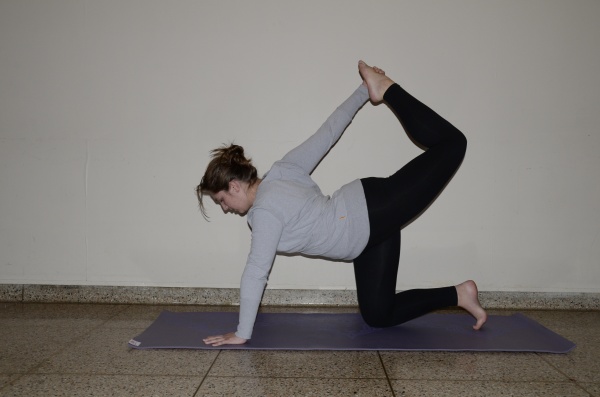Yoga: The Perfect Dorm Room Exercise
January 29, 2016
Winter Storm Jonas ravaged the streets of midtown Manhattan recently, leaving frigid temperatures and a horrid substance called snow in its wake. Cooped up in their apartments and dorm rooms, Fordham Lincoln Center students were left to contemplate a pressing question: Just how are we supposed to get our heart rates up?
For those of us who are lacking in square footage, but still have tons of energy, the answer is simple: yoga. Because it does not require any prior training, teammates or equipment, yoga is an easily accessible workout for college students. During a season in which it is tempting to stay indoors, vinyasa yoga in particular offers a way to beat the cold and stay active.
Vinyasa yoga calls for practitioners to coordinate each of their movements with breath. The different parts of breath are matched with the various ways our bodies move. Lengthening, rising and straightening are paired with inhalations while any folding of the body or deepening of a pose is done on an exhale. The combination of breath and movement naturally builds heat in the body, essential for cold days.
During my two years as a certified yoga instructor, I’ve seen that every body and schedule demands a specialized workout. With this in mind, here are a few accessible and dynamic poses with modifications.
Table Top Pose (With Arm and Leg Extensions)
To come into table top pose, start on your hands and knees, placing your knees hip width (roughly two fists) apart. Stack your shoulders over your wrists and hips over your knees, distributing your weight evenly throughout your limbs. Roll your shoulders away from your ears and press back through your tailbone, lengthening your spine. As you direct your gaze to the floor, come into a steady breathing pattern. On your inhale, reach your right arm forward, concentrating on keeping your weight evenly distributed as you exhale. On your next inhale, raise and straighten your left leg, this time paying attention to tightening your core to stabilize. Remain extended for five breaths and release on an exhale.
Downward-Facing Dog (With Knee Raises)
To perform downward-facing dog, assume the tabletop posture once more, this time placing your hands slightly in front of your shoulders. Tuck your toes beneath your feet and press through the balls of your palms, lifting your pelvis toward the ceiling as you exhale. Roll your shoulders away from your ears as you press back, lengthening your spine. Find balance in the pose by bending or straightening your legs until your weight is evenly distributed between your upper and lower body. As you inhale, raise your heels and release on your exhale, working them toward the floor. To amp up the heat, shift your weight forward as you inhale, bringing your shoulders in line with your wrists as your knees bend to hover two inches above the ground. Exhale and lengthen, returning to the downward facing dog posture.
Warrior Three Pose (With Crunches)
To come into warrior three pose, begin by standing with your feet together, big toes touching, raising your hands toward the ceiling as you inhale. Tuck your tailbone in as you exhale, lengthening your spine. On your next inhale, raise your right leg, keeping your foot flexed and knee bent in a 90-degree angle. As you exhale, extend your raised leg behind you, bending at the hips. Keeping your arms and leg extended, lower your chest until it is parallel with the floor. Stay extended for three breaths before returning to a standing position, keeping your leg raised and bent.
It is important to remember that every pose can and should be modified to best fit your body. Whether you are practicing with a class of 30 students or alone in your dorm room, it is important to recognize that poses will look different on every body. The best practice will come from focusing on what feels right, not what looks right.










